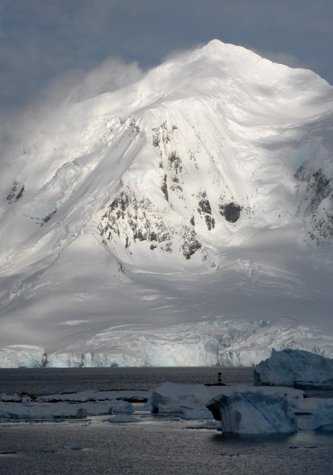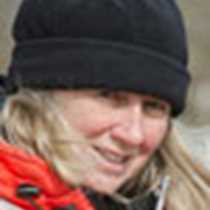There’s a party in Antarctic tonight and everyone has been invited. Personnel from US Antarctic Program’s Palmer Station and UK Heritage Trust’s Port Lockroy join with a visiting film crew and the guests of the National Geographic Explorer for a regional get-together. Music fills the lounge and camaraderie abounds. This really is the whole neighborhood. There is no one else. The entire population of Anvers, Weincke and Goudier Island is less than the number of inhabitants of our floating village. All in all, it’s a pretty nice neighborhood in which to live.
The narrow Neumayer Channel weaves its way between the glacier-clad shoulders of Anvers and Weincke Island. Morning light danced off of the crown of Mount Williams and rolled down its flanks. Jabel Peak spawns a tongue of ice that flows across the land of Damoy Point hiding the rock beneath. Beyond, the peaks of other mountains hid. Dorian Bay is guarded by a rocky iceberg-trapping reef. Within, a quiet cove is a pathway to the past and present. A bright orange Argentine “refugia” awaits, its mission to aid the lost or stranded. For twenty years, its blue companion hut housed British researchers and support staff as they transitioned to bases further south. Today we peeked into their lives before scampering up the ice tongue for a look around or meandering further toward the shore to greet the wildlife living there. Three rotund Weddell seals lounged lazily, occasionally mustering enough energy to scratch or to lift their disproportionately tiny heads . On every rocky knoll, or so it appeared to us, gentoo penguins prepared their nests. Pebbles are a valuable commodity, so much so that a parade of paddling feet marched across a rocky outcropping to dive down deep and return with a new fresh rock from the channel floor. Zodiac cruisers moved from one venue to another, marveling at the sinuous shapes or icicle drapes on beautiful bergs.
A few hours sail transported us to Arthur Harbor where glaciers calve from every quarter and many small islands hide. Here on a small promontory sits the US Antarctic Program’s smallest base. Its doors were opened to us today. Like inquisitive children, we eagerly accepted the invitation to feed plankton to krill or stare at the modified feet of a sea butterfly. Shopping too was an important activity and families back home should expect to find items labeled Palmer Station in their Christmas stockings. But some of us found that the best thing of all was to sit and enjoy the light filtering through the clouds which created a work of art unparalleled, the ice and the mountains of Antarctica.









